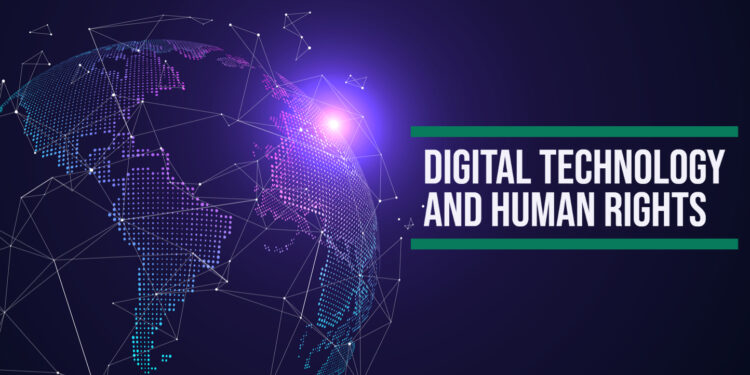In a 2018 opinion piece appearing in the book, New Technologies for Human Rights Law and Practice, published by the Cambridge University Press under the section on The Future of Human Rights Technology, Enrique Piracés, a human rights technology practitioner, posited that “the future of human rights will be intertwined with the advancement of technology”.
These words come as no surprise, especially since digital technology has increasingly become integral to human rights work.
Over the past few years, new and innovative technologies have been developed that play an increasingly significant role in human rights reporting, research, and advocacy. One such technology is Ushahidi, which was created in the aftermath of the 2007-2008 post-election violence in Kenya. It is an open-source platform that enables people to map incidents of violence and human rights violations in real-time. This information can then be used to improve response and relief efforts.
The platform has been utilised by various organisations and local activist groups, such as the Humanitarian Tracker, which used it to monitor violence in the Syrian civil war. HarassMap, an organisation focused on helping stop sexual harassment, also used Ushahidi to help women report such incidents.
Technologies such as Ushahidi are successful when they take into account the relevant cultural context and focus on specific goals, such as justice and human rights.
As noted in 2020 by Michelle Bachelet, the then United Nations High Commissioner for Human Rights, in her opening statement during the Glion Human Rights Dialogue (Glion VII), “Digital technology is changing our world and our lives in unparalleled speed and scale. To ensure this change is for the better – and all – the digital age must be rooted in human rights.”
Of course, digital technology has already significantly impacted human rights reporting, research, and advocacy.
In the past, human rights violations were often only reported by witnesses who were willing to come forward and speak out about what they had seen or experienced. This made it difficult to accurately understand the scope of human rights violations occurring in a particular country or region.
ALSO READ: Uganda’s war victims can smile again
With the advent of digital technology, human rights violations can now be reported anonymously and securely, making it easier for witnesses to come forward and share what they know. This has enabled a more accurate picture of the worldwide scale and scope of human rights violations.
In the justice process, for example, digital technology has increasingly become important, especially regarding the handling of digital evidence. For example, videos and text messages can today be used as evidence in court proceedings. But to ensure that they are admissible, such evidence is often subjected to stringent measures for accuracy and reliability by a forensics expert. This means that the authenticity of the video or text message must be confirmed and any alterations accounted for.
Furthermore, the metadata associated with such evidence must also be considered. This includes information such as the date and time that the video or text was created and the location from which it was filmed or sent. This information helps establish the credibility of the evidence before such digitally recorded evidence is considered enough for advocacy and mobilisation.
Besides allowing human rights defenders to document and collect evidence of human rights abuses, digital technology also allows for the easy sharing of information, connecting with others, and amplifying their voices. It has also made it possible for human rights organisations to reach wider audiences with their work and target their advocacy more effectively.
Social media, for instance, has the potential to increase the accuracy of human rights reporting, as well as make it more accessible to a broader audience. For example, using platforms such as Twitter and Facebook can help spread information about human rights violations quickly and to many people. Additionally, online video platforms like YouTube can provide first-hand accounts of human rights violations.
Furthermore, digital technology can also be used to advocate human rights. For example, using online petitions and social media platforms can help raise awareness about human rights violations. Crowdfunding platforms can also help finance human rights projects.
Digital technology can also help improve the efficiency of human rights research. Online databases, such as the UN Human Rights Office’s OHCHR Databases, can help researchers easily access a wealth of information.
Practically, using Google Earth and other satellite data can help researchers visualise patterns of human rights violations and monitor the flow of displaced people. Artificial intelligence, on the other hand, is helpful in conducting image recognition to gather data on rights abuses and forensic technology to reconstruct crime scenes and bring perpetrators to justice.
However, while it all sounds easy, the multitude of areas in which digital technology advances human rights and their implementation have an equal capacity to undermine the efforts. This calls for ethical considerations while developing or implementing digital technology to further the human rights agenda.
There is a need for caution regarding how technology is used. This is unsurprising given the fact that history has exposed different phenomena of “deepfakes” undermining democratic processes and authoritarian states using technology to abuse power. This can happen when individuals or organisations use digital technology to silence dissent, spread propaganda, or commit human rights abuses. In some cases, they have even used digital technology to commit human rights abuses, such as facial recognition targeting ethnic minorities.
In the case of social media, there is a risk that the platforms can be used to spread misinformation and hate speech. This can lead to a polarisation of public opinion and increased violence. Additionally, the platforms can also be used to surveil and target human rights defenders and activists.
Therefore, data protection is a significant concern when it comes to human rights. This is because the victims of human rights violations are often vulnerable and at risk of retaliation.
The way forward is to ensure the responsible use of technology by all stakeholders, be it government, private sector, or civil society. To ensure that digital technology works for human rights, it is essential that the human rights communities take these risks into account and put safeguards in place to protect individuals and organisations. This can be done effectively through interaction, collaboration, and coordination with leaders from the private sector, non-profits, and governments.







